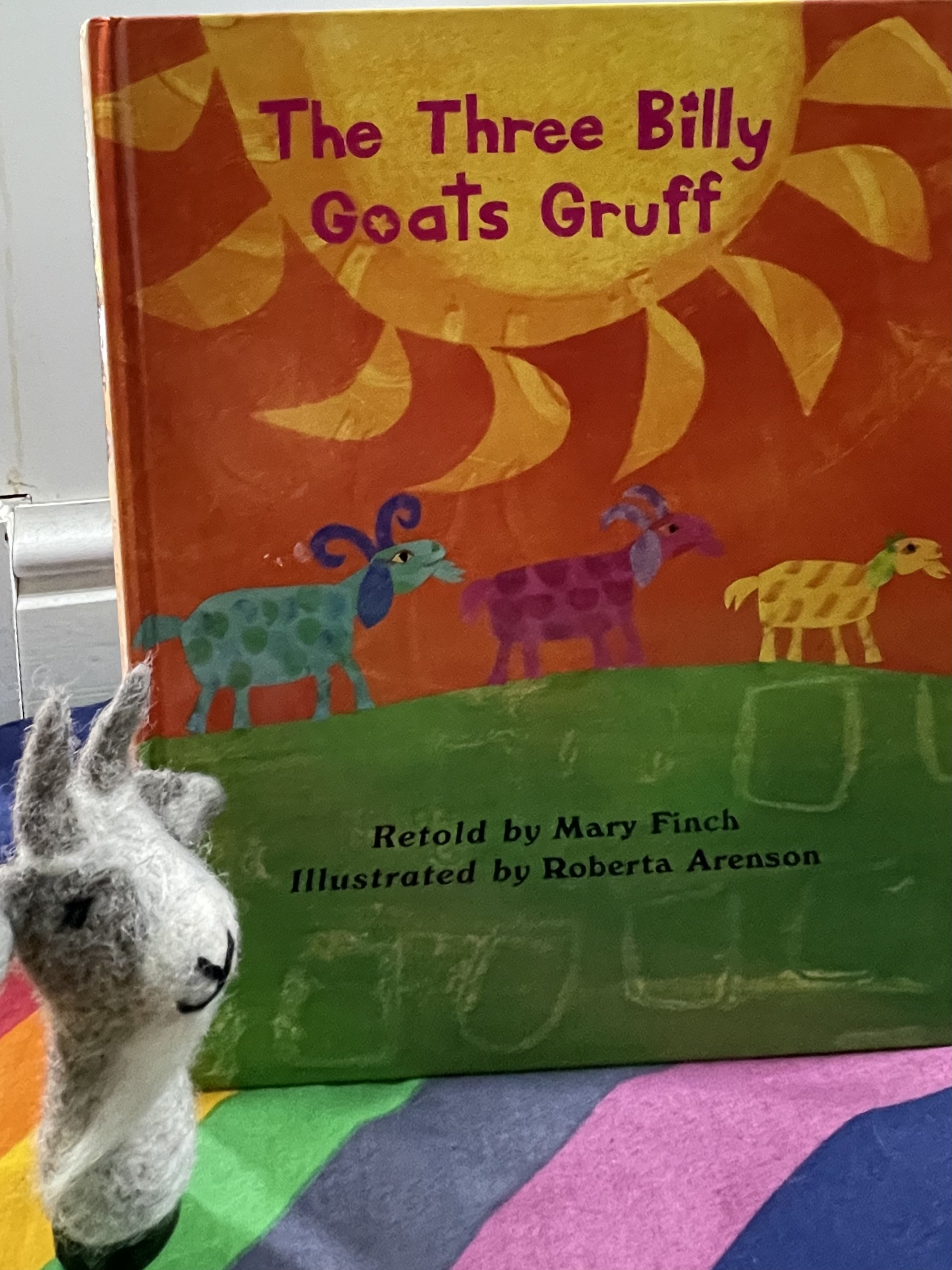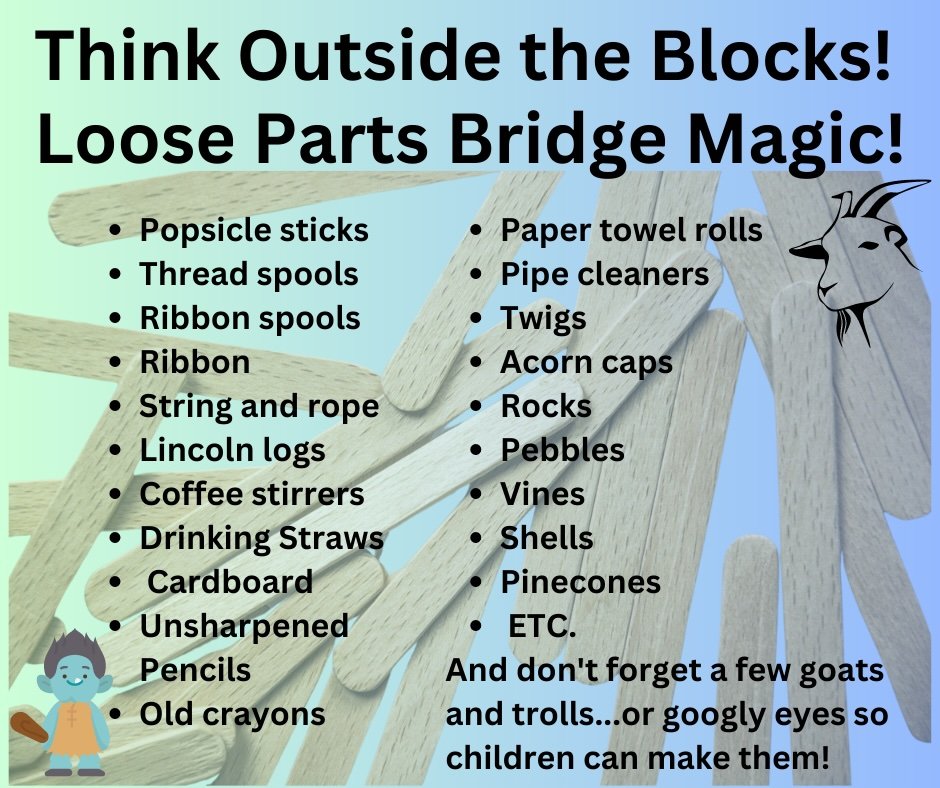Trip Trapping to Initiative
Once upon a time…
The three Billy Goats Gruff took matters into their own hands (hooves?), and did what was necessary to get to the grass on the other side of the bridge.
If that’s not a great example of initiative, a protective factor for resilience, I don’t know what is!
They knew what they wanted and went for it. Self-efficacy! Problem-solving! Motivation to succeed!
And that may be one reason why this simple Norwegian folktale has had such staying power, in spite of never having made it to Disney’s Top 10.
There are MANY versions of the story. Just ask your favorite librarian!
Or trip trap over the internet to these issues of the Imagination on the Move newsletter on Relationships, Executive Functions and Self-Regulation for more billy goat resilience and fun!
The Three Billy Goats Gruff
Retold by Mary Finch and illustrated by Roberta Arenson
Simple and repetitive text so kids can join in
The troll sings a rhyme about being hungry: easy to identify with! (And powerful for emergent literacy!)
Bright collage illustrations that engage and inspire children
(See below for some ideas about how to connect the illustrations with process art opportunities!)
The Three Billy Goats Gruff
Retold by Mac Barnett; Illustrated by Jon Klassen
Funny retelling!
Snappy, playful rhymes
Unique illustrations: muted tones and an edgy/modern feel
Troll ends up going over three increasingly large waterfalls, his fate unknown: “I’ve never been there because there are too many mosquitos.”
Although as a book lover AND former assistant librarian, the clip below should give me hives…I giggled a lot and it made me appreciate the cool humor of this dynamic children’s literature partnership!
It’s no secret:
Children benefit far more from exploring materials and processes than from “cookie cutter art” that grown-ups can recognize as… a thing.
Well-meaning and eager adults often don’t witness (or pay attention to…) the quicksilver of children’s curiosity and ideas as they create.
And this makes it harder to appreciate the genius and myriad connections in a flaking, wrinkled paint-smeared paper a child spent a half hour on.
One way to honor the process is to observe carefully.
Another is a both/and approach: BOTH allow children to freely explore open-ended materials AND invite them to use their creations in a group project that is more representational.
This process art opportunity:
Allows children to take full control over their experience
Makes use of whatever materials you have on hand
Can be used to create beautiful large group collages (and many other things!!!)
AND: supports the child’s initiative, which is important for resilience!
Quick version of what you’ll need:
Assorted paper in a variety of sizes
Assorted color media
Table(s) set up for (messy!) art explorations
Quick version of what you’ll do:
Have children create art papers.
Set aside to dry.
Have children cut or tear into shapes.
Use them to co-create a class collage of the billy goats’ adventure (or for many other things!)
(For more details, download the infographics!)
Children LOVE to build bridges! In fact, it’s even a developmental stage in block building!
Just placing a few goats and a troll/monster in your block area invites a flurry of bridge construction.
So will adding pictures of bridges from your local area or around the world.
And of course: all those picture book versions of The Three Billy Goats are great inspiration!
But how about adding loose parts? (Also known as all kinds of random stuff that is fascinating to children!)
Loose parts invite children to build on what they know about both materials AND representational schema, a fancy term for what they know about, for example, the “bridge-ness” of bridges.
Children have to solve problems, take risks, and keep on going in the face of the inevitable bridge collapses to build the BEST bridge!
All of these great experiences lead to the same resilience that let the Billy Goats get to the other side!








